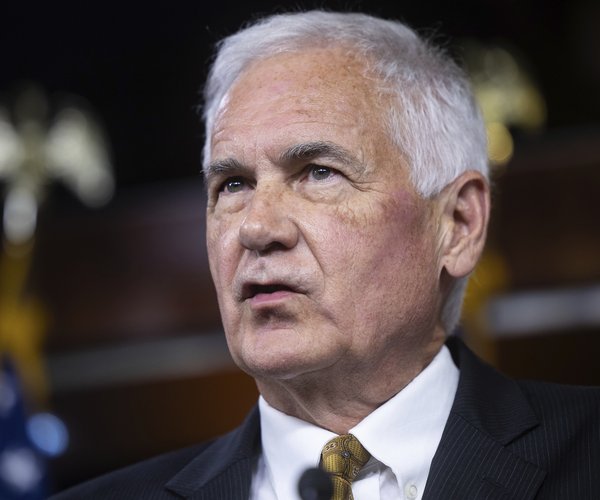Wildfires turn deadlier and more frequent? Blame climate change.
Droughts get more intense and lasting longer? Blame climate change.
Flooding becoming more biblical and often? Blame climate change.
Climate change is real. That’s how the world was created and how it keeps evolving.
Do we impact climate change? Yes. Is it enough to really move the needle? It’s highly debatable and most likely not the case.
What climate change does do — or more precisely mask — is the real underlying reasons wildfires, droughts and flooding are getting worse especially in the arid United States to the west of the Continental Divide and even more so in California. We are living in places where it is not conducive for human life to sustain a Garden of Eden like existence based on the forces and cycles of nature when it comes to water — too much and not enough often in the same locale — and the basic lay of the land and how nature populates it with vegetation.
In “The History of California” historian Hubert Bancroft used Mexican government documents to put the population of California in 1840 at 14,920 — 5,780 non-native Indians and 9,140 native Indians.
California and the rest of the West had a low native Indian population compared to what existed east of the Mississippi River when mass migration started to North America. The East has rainfall that can sustain life. There isn’t arid terrain more susceptible to floods, and wildfires aren’t apocalyptic.
Massive fires swept through the Great Central Valley unchecked for months in the tinder dry summers. Spring meant massive flooding as the Sierra snowpack melted. And when warm unseasonable rain falls in December on a heavy snowpack (think 1996-1997 when rural Manteca last flooded) as it did in 1861-1862 and triggers a massive runoff and placed must of the Central Valley under water, we have mega floods.
What we are experiencing in California today with deadly wildfires are engineered disasters. Two hundred years ago there were wildfires likely even larger in size that burned for months but there weren’t many people around so they had little impact on man but were vital for how nature works. Today there are almost 40 million people living in terrain that 180 years ago had the equivalent population that Ripon has today.
It has been made possible by engineering solutions starting with storing and transferring water from where there’s plenty during the winter and spring in the mountains to where there is little basically everywhere else.
Engineered solutions have made it possible for wooded acreage in hilly terrain in Redding, the Napa-Sonoma valleys or Oakland that 150 years ago that might support a family on every 20 acres or so to be dotted with upwards of 100 homes.
Take a look at the Redding area neighborhoods located on rolling terrain covered with trees and shrubs that turn tinder dry in summer. See how homes are built right under pine trees that in a matter of seconds can explode into flames. Think of the winds that whip across the state that are kissing cousins of the feared Santa Ana winds of Los Angeles fame that blow hot and dry out everything in its path.
We surround the homes with vegetation, bring in all sorts of things that will burn, and rarely maintain a clear zone needed as a defense against fire because it won’t happen to us.
We complicate matters by having “effective” fire suppression efforts. Our goal is to stop wildfires whether they are started by an act of man — accidental of otherwise — or by nature via lightning strikes.
With Mother Nature it burns until it runs out of fuel or the weather slowly chokes life out of it. Thanks to the modern-day fire service we aggressively combat fires. That means they stop advancing long before they run out of fuel and before sufficient rains fall.
That’s great to save what we define as property in the short term. But it allows even more fuel to build up for a future fire setting the stage for massive losses of property and lives in a wildfire that gets out of control or to cause proportionally more damage to forests than nature left on its own would have done.
It is why the Forest Service and National Park System make heavy use of prescribed burns. Without them places like Yosemite Valley would turn into toast.
People have to live somewhere. At the same time, it is doubtful air quality conscious California is going to allow controlled burns in Bay Area hills or near foothill communities even on days when weather conditions cooperate in a bid to minimize the potential for deadly wildfires.
Because the climate change Chicken Littles cluck their heads off during and after each deadly major wildfire we focus on the wrong solutions. Reducing greenhouse gas might work a bit but the real big gains to increase our safety and reduce the potential for more destructive wildfires in the hills, valleys, coastal plains and mountains is modifying how we build homes, establish safety zones around homes, how we maintain property, and how much we are willing to embrace controlled fires versus air quality.
We can’t eliminate wildfires but we can work to tone them down. But it can’t be done by reducing our carbon footprint. Preventative measures need to reflect the reality we can change and are dealing with, not a politically correct solution.
Until we do that, California will keep on burning more intensely and deadly.
This column is the opinion of Dennis Wyatt and does not necessarily represent the opinion of The Journal or Morris Newspaper Corp. of CA. He can be contacted at dwyatt@mantecabulletin.com or 209.249.3519.







